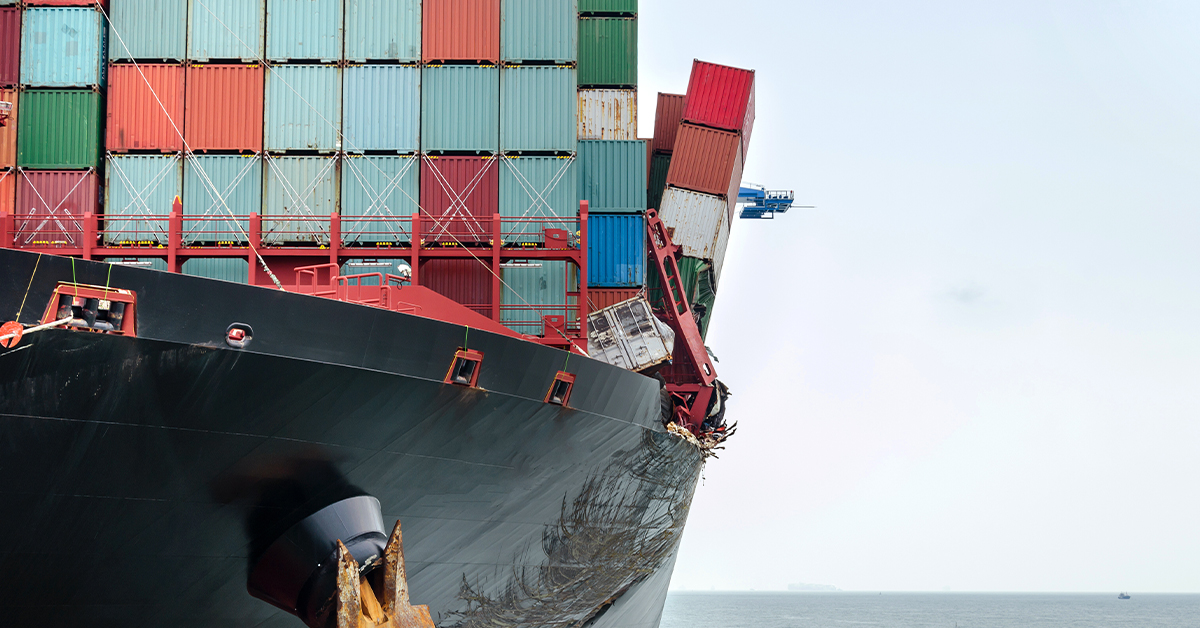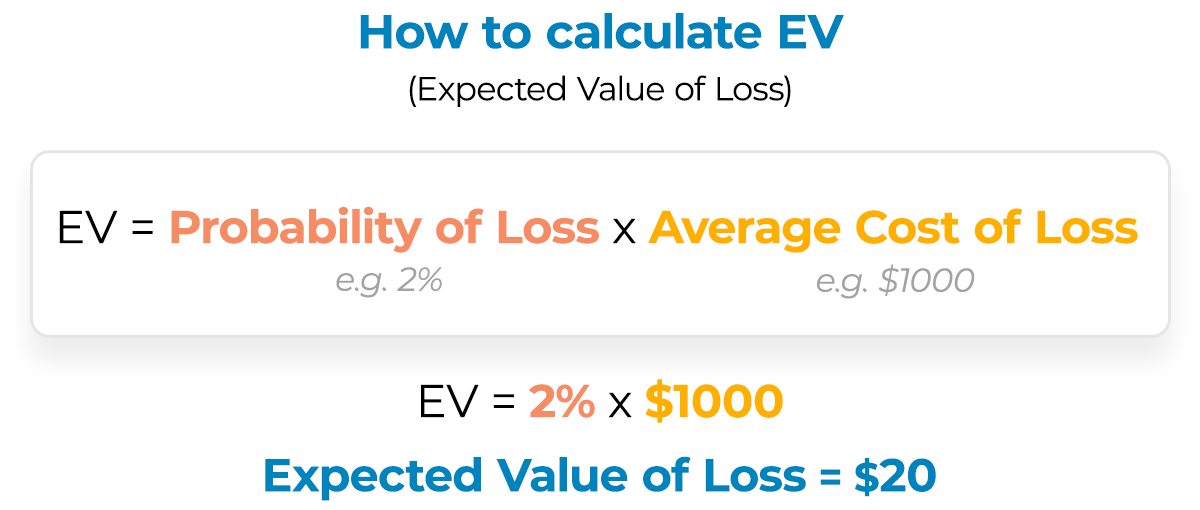It’s estimated that the global financial impact of cargo loss exceeds $50 billion annually. This amount includes cargo stolen or damaged in transport, as well as several other associated costs, such as supply chain disruption, additional expenses for urgent freight deliveries, increased costs for insurance claims, and revenue loss from cancelled shipments.
Evidently, freight is fraught with a multitude of risks. In this article, we’ll take you through the most common ones and discuss the best strategies for managing risk in freight shipping and how to minimise losses for your business.
Contents:
- What Are the Risks of Freight Transport?
- Developing a Freight Risk Management Strategy
- Tips to Minimise Risk and Losses
- 1. Find the Right Insurance
- 2.Use Technology for Tracking and Safety
- 3. Invest in Staff Training and Vigilance
- 4. Establish Clear Shipping Protocols
- 5. Build Relationships with Reliable Partners
- 6. Review Your Insurance Regularly
- Summary
What Are the Risks of Freight Transport?
In 2020, the APL England – a container ship operated by ANL – lost 40 containers overboard off the coast of Sydney, with a further 75 containers damaged due to severe weather conditions. The ship was travelling from Ningbo, China to Melbourne, Australia. The containers, some carrying medical supplies, household appliances, and building materials, washed up along New South Wales beaches, which required a substantial environmental cleanup led by the Varley Group.
This is just one example of what can go wrong en route. Here’s a list of the most common risks encountered in international shipping:
- Misrouting of shipments
- Contamination or spoilage of goods, especially in the case of perishable items
- Environmental factors causing damage, such as moisture or temperature changes
- Currency exchange rate fluctuations impacting costs
- Political instability or economic sanctions affecting certain routes or regions
- Contract disputes with carriers or logistics providers
- Cybersecurity breaches compromising sensitive shipping information
- Carrier insolvency leading to recovery challenges for goods in transit
- Natural disasters: pandemics, earthquakes, hurricanes, or tsunamis impacting supply chains
- Maritime piracy or hijacking in high-risk waters
- Infrastructural failures at ports or during inland transportation
- Discrepancies in documentation leading to legal complications
- Cargo abandonment due to non-payment or refusal of goods
- Capacity constraints leading to space shortages on vessels or aircraft
- Quality control issues resulting in rejection of goods upon delivery

Source: Freightwaves
Developing a Freight Risk Management Strategy
Being proactive is your best defence against risk and losses and this involves developing a robust Freight Risk Management Strategy.
1. Identifying Potential Risks
The process begins with the identification of every element that presents a risk. This involves mapping the journey from origin to destination, pinpointing areas of vulnerability—either through certain geographical regions or within specific links of the supply chain.
- Route analysis. Examine the planned shipping routes for geographical and political stability. For instance, routes that pass through areas with a history of piracy or political unrest, like the Gulf of Aden between the coasts of Arabia and the Horn of Africa, require additional security measures.
- Supplier and carrier assessment. Evaluate the reliability of suppliers and carriers. Check their financial stability, service history, and operational redundancy.
- Cargo specifics. Consider the nature of the goods being shipped. Fragile, high-value, or hazardous materials present unique risks and require special handling and insurance considerations.
- Regulatory compliance. Make sure you fully understand international, national, and local regulations that might affect the shipment, such as customs protocols or environmental regulations.
- Infrastructure review. Analyse the adequacy of infrastructure in both the origin and destination locations, including ports, roads, and handling facilities.
2. Evaluating Risk Impact and Likelihood
What’s the probability of each identified risk? What’s the potential impact? It may be worth categorising risks into tiers, allowing you to allocate resources and attention proportionately.
- Risk scoring. Assign a risk score based on the probability and potential impact of each identified risk. This quantitative approach helps prioritise risk management efforts.
- Historical data analysis. Use data on past incidents to inform the risk assessment. This can include looking at carrier incident rates, port congestion statistics, and known issues with specific trade lanes.
- Stakeholder input. Gather insights from various stakeholders, including local agents, logistics experts, and insurance providers, to get a well-rounded view of potential risks.
Calculating the Expected Value of Loss (EV)
To determine the necessary security for your supply chain activities, use the Expected Value of Loss (EV), a metric assessing the financial impact of lost or compromised shipments. For example, if your data shows a 2% loss incidence over the previous year, this EV will help you decide how much to invest in mitigating such losses.
Step 1: Probability of Loss
If your company had 2 compromised shipments out of 100, that’s a 2% probability of loss. Analysing regional data might reveal which routes are riskier, highlighting where to focus your risk management efforts.
Step 2: Economic Consequences of Loss
If the average value of your shipment is $50,000 and your loss rate is 2%, for example, you’re looking at an expected loss of $1,000 per shipment. Remember to factor in indirect costs like increased insurance premiums and reshipping.
Step 3: Calculating Your EV
Once you’ve determined the likelihood and cost of shipment loss, calculate your EV by multiplying the probability of loss by the average cost per loss. If there’s a 2% chance of loss and the average cost is $1,000, your EV is $20 per shipment. This amount represents what you can expect to lose financially per shipment due to risks and helps guide your spending on preventive measures.

3. Preventive Measures & Contingency Plans
With risks identified and evaluated, the next step is to establish preventive measures and contingency plans.
- Route optimisation. Use software to identify and implement more secure and efficient shipping routes. Tools like MachShip help you determine the best carrier and service type from all available options, factoring in various constraints and risks.
- Packaging options. Invest in high-quality packaging solutions designed to withstand any conditions. Organisations like ISTA provide guidelines and testing protocols for packaging.
- Technology integration. Implement advanced tracking and monitoring technologies to provide real-time data on the location and condition of shipments.
- Training and protocols.Develop rigorous training programs for staff and establish clear protocols for handling emergencies, including regular drills and simulations.
- Insurance coverage.Review and secure comprehensive insurance coverage to protect against potential financial losses.
- Contingency planning.Prepare detailed contingency plans for various scenarios, ensuring there’s a predefined response for incidents like cargo theft or severe weather delays.
How SAAS Automotive Increased Efficiency with MachShip Route Optimisation | Case Study
Tom Purvis, Head of Warehouse Operations at SAAS Automotive, recognised the inefficiency inherent in manually comparing fluctuating carrier rates. The MachShip route optimisation engine provided the ideal solution, enabling his team to automatically assess and price carrier services, inclusive of variables like fuel surcharges and GST.
This system ensures that SAAS Automotive consistently selects the most cost-effective shipping options saving time and efforts that can be redirected to other strategic tasks.
Tips to Minimise Risk and Losses
1. Find the Right Insurance
Insurance policies are complex products with several clauses and variables. Choosing an insurance intermediary with experience in international logistics and transportation can make a big difference. A broker can help you understand the features of the insurance coverage, the valuation clauses that define the maximum payout, and ensure your shipments will be covered by an adequate amount. Remember that brokers work for you, not the insurance company.
2. Use Technology for Tracking and Safety
For high-value shipments, especially those travelling long distances with multiple transfer points, using cargo security devices, such as GPS tracking, IOT devices and locks or tamper-proof seals can substantially reduce risk of loss. You can also use software that detects inconsistencies in shipping documents to prevent problems and delays that could affect your cargo.
3. Invest in Staff Training and Vigilance
Despite advances in technology, the human element remains critical. Regular training helps your staff recognise fraud techniques and red flags, fostering a proactive approach to risk management. This also involves a conscious effort in creating an environment where employees feel empowered to report suspicious activities, pre-empting risks and identifying strategies to avoid them.
4. Establish Clear Shipping Protocols
Clear, well-defined shipping and receiving protocols can reduce the risk of unauthorised or fraudulent shipments. Precise guidelines ensure that every consignment undergoes the same checks and verifications, maintaining transparency and accountability in your operations.
Did you know: MachShip builds integrations with carriers so you don’t have to.

5. Build Relationships with Reliable Partners
Successful freight shipping collaborations rely on trust and clarity. Begin by conducting detailed background checks on potential partners to ensure their reliability and industry reputation. Establish clear communication lines and set mutual expectations from the outset. Nurture long-term relationships with regular meetings where you can review the partnership and assess mutual satisfaction.
6. Review Your Insurance Regularly
As your business and the external environment change, so do the associated risks. Periodically reviewing and adjusting your insurance policies means that coverage will continue to meet your evolving needs, offering protection against a wide range of potential issues, from in-transit damage to the rising risk of freight fraud.
Summary
A forward-looking strategy that anticipates and tackles freight shipping challenges early on will allow you to steer clear of potential disruptions and losses. This proactive approach will keep your operations on track while ensuring a more resilient and efficient supply chain journey.

